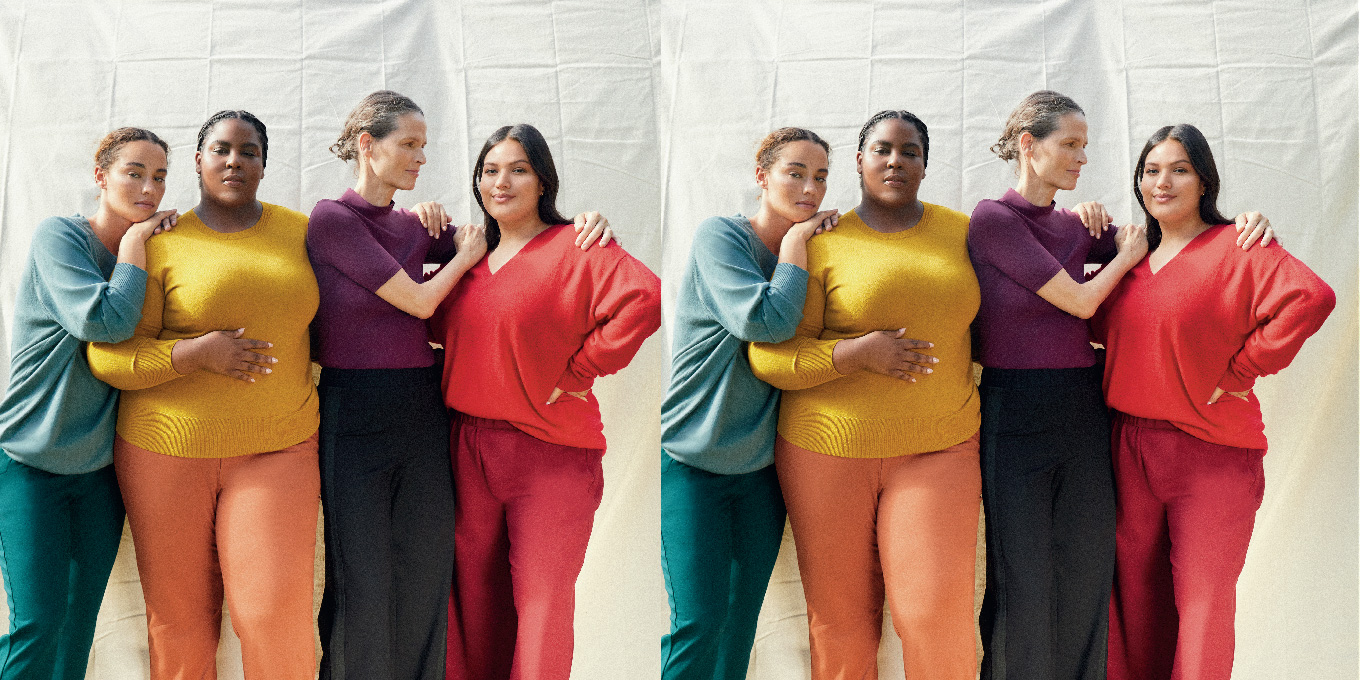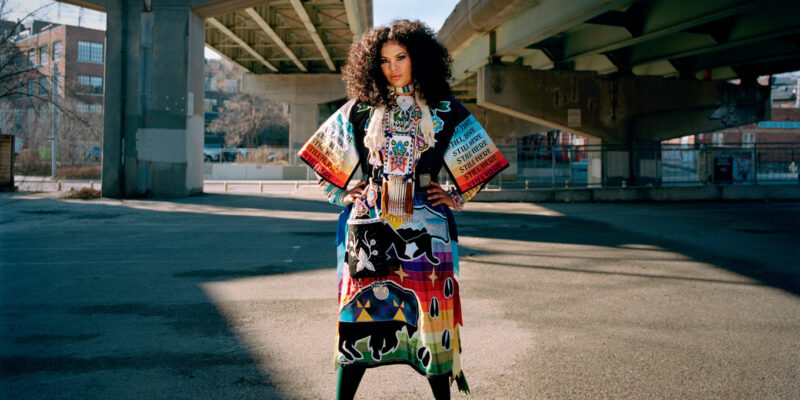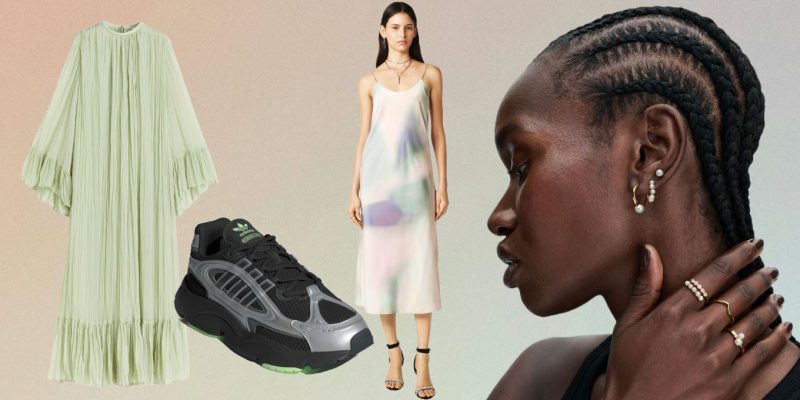Fashion
Universal Standard Is Raising the Bar for Size-Inclusive Fashion
"We never set out to be the sole source for size-inclusive clothing—we set out to start a revolution.”
by : Gabrielle Lisa Collard- Oct 9th, 2023

Universal Standard
Founded in 2015 by Alexandra Waldman and Polina Veksler, Universal Standard features one of the most inclusive size ranges in the industry—all of its garments are available in sizes 00 to 40—making the brand a revelation for many. We spoke with CEO Polina Veksler about the lack of inclusivity in fashion, her business philosophy and how she hopes to set a new standard for other labels.
How did Universal Standard come about?
“Prior to starting [the brand], I’d spent most of my career working in finance, investment and merchant banking. After living abroad for many years, I returned to the United States in 2014 and met my friend and now business partner, fashion journalist Alex Waldman. Alex agreed to attend a networking event with me, where I was hoping to find a prospective employer. We set out on a shopping trip to find outfits for the event but quickly realized that we couldn’t shop together due to our different sizes. With such dismal options for double-digit sizes, one of us could hardly shop at all. It was clear that all people aren’t given the same level of style, quality or even respect in fashion.”
What happened next?
“A light bulb went on. If the average customer in the United States wears a size 18, why aren’t there more elevated options for them? Everyone deserves access to exceptional clothing. This observation about the exclusivity of the fashion industry inspired our mission to democratize the shopping experience so that all people—whether they’re a size 2 or a 32—can shop using style as the only filter. There was a gap in the market for high-quality clothes that all people can wear, and that market potential just so happens to net out around $100 billion, so we decided to tap into it.”
How is your shopping experience different?
“Our sizing reflects the average customer in the United States, so our medium is a size 18. Our website has a ‘See It in Your Size’ feature, which allows customers to see how a specific style will fit on their body. We also offer virtual styling with in-house fit experts, along with Fit Liberty, an exchange program that lets customers replace pieces when their size changes. Anyone can shop with us and feel confident that the clothes they love come in their size—they never have to compromise.”
“In 2023, I’m still so surprised by the lack of size-inclusive options—it feels like fashion will try anything except being size-inclusive.”
Are you hoping to inspire others with your commitment to inclusivity?
“All of our continued efforts are pushing for a cultural shift [in which sizes aren’t distinguished by] ‘plus-size’ or ‘straight-size.’ By offering a limited number of select styles in a specialty category, brands still other certain shoppers. We want a new archetype that allows everyone to shop the same way. In 2023, I’m still so surprised by the lack of size-inclusive options—it feels like fashion will try anything except being size-inclusive.”
DO YOU FEEL LIKE THE INDUSTRY IS CHANGING? “Conversations
surrounding the downsides of size-inclusivity are more preva-
lent than ever, with some participating brands struggling to
make it work. Though this news cycle may be discouraging,
we urge brands to reject fashion’s outdated narrative. In five to
10 years, those who remain committed to their efforts will have
overcome hurdles and be key players in inclusivity. Embracing
inclusivity is not only possible but also profitable.”
WHAT ARE YOUR HOPES FOR YOUR BRAND’S FUTURE AND THE
FASHION INDUSTRY AS A WHOLE? “We’re excited to continue to
pioneer size-inclusivity in fashion and encourage well-known
brands to follow suit. There’s power in numbers, and with a
collective mission to make progress, we can spark measurable
and sustainable change. While I love our brand, we never set
out to be the sole source for size-inclusive clothing—we set out
to start a revolution.”
Are you hoping to inspire others with your commitment to inclusivity?
“All of our continued efforts are pushing for a cultural shift [in which sizes aren’t distinguished by] ‘plus-size’ or ‘straight-size.’ By offering a limited number of select styles in a specialty category, brands still other certain shoppers. We want a new archetype that allows everyone to shop the same way. In 2023, I’m still so surprised by the lack of size-inclusive options—it feels like fashion will try anything except being size-inclusive.”
Do you feel like the industry is changing?
“Conversations surrounding the downsides of size-inclusivity are more prevalent than ever, with some participating brands struggling to make it work. Though this news cycle may be discouraging, we urge brands to reject fashion’s outdated narrative. In five to 10 years, those who remain committed to their efforts will have overcome hurdles and be key players in inclusivity. Embracing inclusivity is not only possible but also profitable.”
What are your hopes for your brand’s future and the fashion industry as a whole?
“We’re excited to continue to pioneer size-inclusivity in fashion and encourage well-known brands to follow suit. There’s power in numbers, and with a collective mission to make progress, we can spark measurable and sustainable change. While I love our brand, we never set out to be the sole source for size-inclusive clothing—we set out to start a revolution.”
Newsletter
Join our mailing list for the latest and biggest in fashion trends, beauty, culture and celebrity.
Read Next

Fashion
Bella Hadid Glows in a Strapless Lace Dress With a Sheer Corseted Bodice
Hadid was also seen that same day promoting her new fragrance brand ‘Ôrebella.
by : Briannah Rivera- May 3rd, 2024

Fashion
This Year’s Indigenous Fashion Arts Festival Is Sure to Impress
"Creating an opportunity for us to work collectively—prioritizing language and tradition—is of the utmost importance. Our similarities are inspired and shaped by the legacies left to us by our ancestors.”
by : Kelly Boutsalis- May 3rd, 2024

Culture
Introducing 2024’s Most Innovative Products, Voted on By Canadians
*Adds to cart*
by : ELLE Canada- May 1st, 2024



